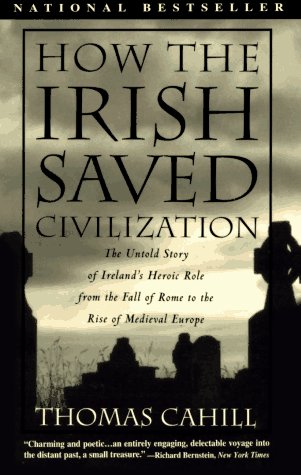Interesting
Reading for 2012
Charles Dickens - A Christmas Carol
(1843)
 |
In the history of English literature, Charles Dickens's
A Christmas Carol, which has been continuously in print since it was first published in the winter of 1843, stands out as the quintessential Christmas story.
The tale begins on Christmas Eve seven years after the death of Ebenezer Scrooge's business partner Jacob Marley. Scrooge is established within the first stave (chapter) as a greedy and stingy businessman who has no place in his life for kindness, compassion, charity, or benevolence. After being warned by Marley's ghost to change his ways, Scrooge is visited by three additional ghosts "each in its turn" who accompany him to various scenes with the hope of achieving his transformation.
The first of the spirits, the Ghost of Christmas Past, takes Scrooge to the scenes of his boyhood and youth which stir the old miser's gentle and tender |
side by reminding him of a time when he was more innocent.
The second spirit, the Ghost of Christmas Present, takes Scrooge to several radically differing scenes (a joy-filled market of people buying the makings of Christmas dinner, the family feast of
Scrooge's near-impoverished clerk Bob Cratchit, a miner's cottage, and a lighthouse among other sites) in order to evince from the miser a sense of responsibility for his fellow man.
The third spirit, the Ghost of Christmas Yet to Come, harrows Scrooge with dire visions of the future if he does not learn and act upon what he has witnessed. Scrooge's own neglected and untended grave is revealed, prompting the miser to aver that he will change his ways in hopes of changing these "shadows of what may be."
In the fifth and final stave, Scrooge awakens Christmas morning with joy and love in his heart, then spends the day with his nephew's family after anonymously sending a prize turkey to the Crachit home for Christmas dinner. Scrooge has become a different man overnight, and now treats his fellow men with kindness, generosity, and compassion, gaining a reputation as a man who embodies the spirit of Christmas. The story closes with the narrator confirming the validity, completeness, and permanence of Scrooge's transformation.
Harper Lee
- To Kill a Mockingbird
(1960)
 |
"Shoot all the bluejays you want, if you can hit 'em, but remember it's a sin to kill a mockingbird."
A lawyer's advice to his children as he defends the real mockingbird of Harper Lee's classic novelóa black man charged with the rape of a white girl. Through the young eyes of Scout and Jem Finch, Harper Lee explores with rich humor and unswerving honesty the irrationality of adult attitudes toward race and class in the Deep South of the 1930s. The conscience of a town steeped in prejudice, violence, and hypocrisy is pricked by the stamina and quiet heroism of one man's struggle for justiceóbut the weight of history will only tolerate so much.
One of the best-loved classics of all time, To Kill a Mockingbird has earned many
distinctions since its original publication in 1960. It has won the |
Pulitzer Prize, been translated into more than forty languages, sold more
than forty million copies worldwide, and been made into an enormously popular movie. It was also named the best novel of the twentieth century by librarians across the country (Library Journal).
Kathryn Stockett - The
Help (2009)
 |
A modern classic,
The Help has been a cultural touchstone for the millions of readers who have cheered on Skeeter, laughed with Minny, and hissed at Hilly. The noble and strong Aibileen has become a heroine for countless fans whose letters have poured in from all over the world. Now the bestselling and beloved book is available in a deluxe gift edition.
The Help has been on bestseller lists for longer than any other hardcover fiction title since The Da Vinci Code. It was USA Today's 2009 Book of the Year and has been published in thirty-seven countries around the world.
An excellent movie version, produced by DreamWorks and 1492 Pictures,
was released in August 2011. |
Thomas
Cahill - How The Irish Saved Civilization (1996)
 |
The perfect St. Patrick's Day gift, and a book in the best tradition of popular history -- the untold story of Ireland's role in maintaining Western culture while the Dark Ages settled on Europe.
Every year millions of Americans celebrate St. Patrick's Day, but they may not be aware of how great an influence St. Patrick was on the subsequent history of civilization. Not only did he bring Christianity to Ireland, he instilled a sense of literacy and learning that would create the conditions that allowed Ireland to become "the isle of saints and scholars" -- and thus preserve Western culture while Europe was being overrun by barbarians.
In this entertaining and compelling narrative, Thomas Cahill tells the story of how Europe evolved from the classical age of Rome to the medieval era. Without Ireland, the transition could not have taken place. Not only did |
Irish monks and scribes maintain the very record of Western civilization -- copying manuscripts of Greek and Latin writers, both pagan and Christian, while libraries and learning on the continent were forever lost -- they brought their uniquely Irish world-view to the task.
As Cahill delightfully illustrates, so much of the liveliness we associate with medieval culture has its roots in Ireland. When the seeds of culture were replanted on the European continent, it was from Ireland that they were germinated.
In the tradition of Barbara Tuchman's A Distant Mirror, How The Irish Saved Civilization reconstructs an era that few know about but which is central to understanding our past and our cultural heritage. But it conveys its knowledge with a winking wit that aptly captures the sensibility of the unsung Irish who relaunched civilization.
|



